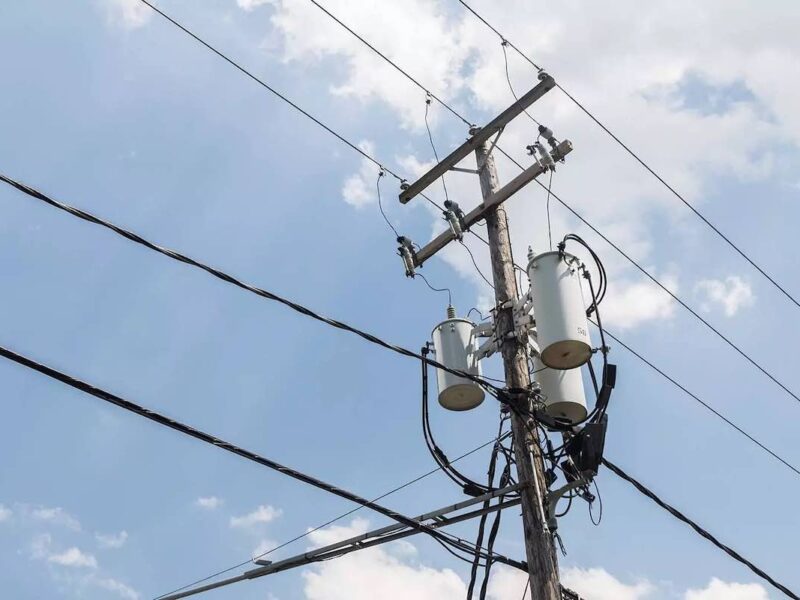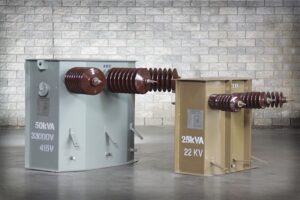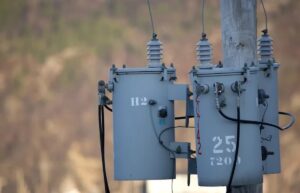
Pole Mounted Transformers: A Key Element in Power Distribution
Pole Mounted Transfoemer Transformers are vital components in power distribution networks, responsible for transferring electrical energy between circuits via electromagnetic induction. Among the various transformer types, pole-mounted transformers are particularly notable for their unique installation style and practical utility. These units are typically installed on utility poles and are widely used to step down high voltage from transmission lines to levels suitable for residential or light commercial applications. This not only makes electricity more accessible but also ensures safety for end users.
In suburban and rural environments, pole-mounted transformers play a critical role in connecting high-voltage networks to individual consumers. Designed to prioritize efficiency, reliability, and safety, they form the backbone of localized power delivery. This article explores their components, working principles, installation methods, and advantages, offering readers a comprehensive understanding of their function and value.
1. What Is a Pole-Mounted Transformer?
“Pole-mounted” describes the installation form, not the classification of the transformer. Typically, pole-mounted transformers have capacities under 250kVA, and their primary application is voltage reduction—from high transmission voltages to safe, usable levels for homes and small businesses. While commonly used for step-down applications, they can also be configured to step up voltage in some scenarios.
Transformers can be categorized in various ways:
- By insulation medium: Oil-immersed vs. Dry-type
- By installation site: Indoor vs. Outdoor
- By voltage regulation: On-load vs. No-load tap changing
2. How Do Pole-Mounted Transformers Work?
Pole-mounted transformers function based on the principle of electromagnetic induction. They typically consist of two windings:
- The primary winding, connected to the high-voltage supply
- The secondary winding, delivering the stepped-down voltage
As current flows through the primary coil, it generates a magnetic field. This magnetic field induces an electromotive force in the secondary coil, resulting in voltage transformation. Commonly, these transformers convert distribution voltages to 120/240V for residential use.
3. Key Components of a Pole-Mounted Transformer
Pole-mounted transformers are composed of several core parts that work together to ensure reliable operation:
- Oil Tank: Houses the transformer core and windings, filled with insulating oil for cooling and electrical insulation. The tank also provides structural protection against environmental elements.
- Core and Windings: The electromagnetic core is made from high-permeability steel to reduce energy losses. Windings (typically copper or aluminum) carry the electrical current.
- Insulating Oil: Serves as both coolant and electrical insulator. It prevents oxidation and electrical discharges, and its quality should be monitored regularly.
- Tap Switch: Used to adjust the transformer’s output voltage, compensating for load fluctuations. Can be manual or automatic.
- Bushings: Provide insulated passage for high-voltage and low-voltage connections, preventing arcing or leakage.
- Oil Conservator Tank (in some models): Accommodates oil expansion due to temperature changes while preventing oil oxidation by isolating it from air.
- Breathers: Contain desiccants (e.g., silica gel) to absorb moisture from the air entering the conservator, maintaining oil quality.
4. Characteristics of Pole-Mounted Transformers
These transformers are well-suited for specific use cases due to their practical design features:
- Elevated installation: Protects the transformer from ground-level hazards such as flooding or tampering.
- Ease of access: Linemen can access units with bucket trucks for inspection and maintenance.
- Cost-effective: Requires less infrastructure compared to pad-mounted types.
- Space-saving: Mounted off the ground, freeing up land for other uses.
- Aesthetic impact: Minimal in rural settings, though above-ground installation may be visually intrusive in urban areas.
5. Types of Pole-Mounted Transformers
There are two main categories, each available in single-phase or three-phase configurations:
- Conventional Type:
These transformers come without built-in protection devices. They are more cost-effective and ideal where external protective devices (like fuses or lightning arresters) can be installed separately. Commonly used in low-risk areas. - CSP (Completely Self-Protected):
These models integrate protective devices such as lightning arresters, circuit breakers, and fuses. CSP transformers are ideal for areas with higher reliability and safety demands. Though more expensive, they simplify installation and improve system reliability by minimizing downtime and equipment damage.

6. Advantages and Disadvantages
Advantages:
- Versatile: Used in both residential and remote areas
- Scalable: Multiple units can form a three-phase system
- Economical: Lower cost and maintenance requirements
- Space-efficient: Compact, elevated design saves ground space
- Durable: Enclosed construction enhances life span (30–60 years)
- Safe: Reduced risk of accidental contact or vandalism
- Easy to install: Lightweight and compact for pole mounting
Disadvantages:
- Environmental exposure: Vulnerable to weather, birds, and animals
- Maintenance difficulty: Elevated installation increases service complexity
7. Installation Requirements
To ensure safety and performance, pole-mounted transformers should follow these guidelines:
- Install near the load center to reduce voltage drops and line losses.
- Maintain minimum clearances:
- 5m from combustible buildings
- 3m from fire-resistant buildings
- 5m above ground for live components
- Warning signs should be placed 2.5–3.0m above ground
- High-voltage lines must always be above low-voltage lines
- Avoid installation in areas with explosive gases or conductive dust—opt for indoor substations instead in such cases.

8. Maintenance Best Practices
Regular maintenance is essential for reliable operation:
- Visual Inspection: Look for oil leaks, rust, or visible damage
- Oil Quality Check: Regularly test and top up insulating oil
- Oil Purification: Remove moisture and impurities using filtration or vacuum dehydration
- Tightening Connections: Prevent arcing or overheating due to loose terminals
- Cleaning: Remove dust and debris from radiators and surfaces
- Load Monitoring: Ensure load remains within rated limits
- Insulator Inspection: Check for cracks or contamination that could lead to faults

9. Conclusion
Pole-mounted transformers are a cornerstone of modern power distribution, particularly in suburban and rural settings. Their compact size, cost-efficiency, and ease of installation make them a preferred choice for utilities and engineers. By understanding their structure, function, and maintenance requirements, stakeholders can ensure safe, reliable, and long-term operation.
Whether you’re deploying a single-phase CSP for a residential area or a three-phase conventional transformer for a rural development, choosing the right pole-mounted transformer supports the broader mission of delivering power safely and efficiently across diverse environments.
Professiona Switchgear supplier and manufacturer
- Zhejiang GONGSHUN Electrical Co.,Ltd (electricgs.com), Our company was founded in the late 1990s, specializing in the production of inflatable cabinets, SF6 inflatable cabinets, and various high and low voltage complete sets of electrical equipment. It has multiple subsidiaries under its jurisdiction, including high-voltage load switch branch, high-voltage circuit breaker branch, high-voltage fuse branch, and technology development branch.Our technical expertise, comprehensive product portfolio and long-term rich experience are helping many customers in need to solve their power problems. We’re happy to help at any time. Whether you need application product advice or technical assistance, our global service team is committed to providing you with the right support. For more technical information about medium voltage earthing switch, feel free to contact us, send an email to gongshun@electric-cn.com
- Our company specializes in producing 12KV-40.5KV series high-voltage electrical products: FZN58, FLN48, FLN36, FZRN25, FZN21, FN18, ZFN16, FN12, FN8, FN7, FN5, XRNT, XRNP, VS1, ZN28, ZW8, ZW32, JN15, GN19, GN22, GN24, GN30, CLXGN15-12, HXGN □ -12, DXG-12 (L), DFW □ -12 high-voltage cable branch box, CLXGN □ -12 (SF6) series inflatable cabinet 12KV and 35KV cable accessories, etc; CLVXP-12 indoor AC high voltage fixed switchgear, CL-SIS-12 compact solid insulated ring main unit, professional assembly Schneider SC6 (SF6) series load switchgear, ABB produced SFG (SF6) series load switchgear and other series products; Distribution and agency of high-voltage load switches and inflatable cabinets produced by Schneider Electric and ABB; Siemens produces the 3AJ1 series of indoor medium voltage vacuum circuit breakers and other related products. The company has a complete range of products and has been operating safely on domestic and international power grids for a long time, receiving unanimous praise from both new and old users. Among them, multiple products such as FZRN25, FN12, FLN36-12, XRNT-12 have been exported to various countries and regions in East Asia, South Asia, Southeast Asia, Africa, and the United States.

There’s an effortless beauty in the way you express complex ideas, making them feel as though they’ve always been obvious.
I really appreciate that — simplifying without oversimplifying is always my goal. If there are any topics you’d like me to cover next, I’d love to hear your thoughts!